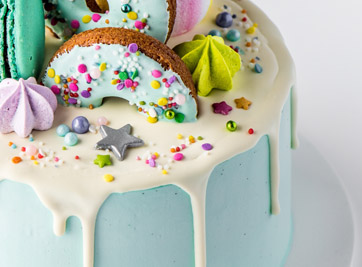
Identifiers
INS No. 133
Brilliant blue FCF
FD&C Blue No. 1
E133
CAS 3844-45-9
CI Food Blue 2
Physical Description
Brilliant blue occurs as a dark purple to bronze powder or granules. It is a triphenylmethane dye, and is principally the disodium salt of ethyl [4-p– [ethyl(m-sulfobenzyl)amino] -α−(o-sulfophenyl)benzylidene]-2,5-cyclohexadien-1-ylidene] (m-sulfobenzyl)ammonium hydroxide inner salt and may be converted to the corresponding aluminum lake.
Common Uses
Brilliant blue can be used in cosmetics, ingested drugs, and foods, including dietary supplements, breakfast cereals, cakes and cupcakes, candies, chewing gum, dairy products, decorations for baking, flavored water and frozen treats.
Specifications
US FDA
Commission Regulation (EU) No 231/2012
Codex GSFA Provisions
Brilliant blue FCF (INS No. 133) is added to foods and beverages at concentrations up to a maximum permitted level (MPL) as adopted by the Codex Alimentarius Commission. There are more than 50 food categories for which MPLs for brilliant blue have been adopted in the General Standard of Food Additives.
Regulatory Approvals
Safety Reviews
Safety evaluation of certain food additives (Eighty-fourth meeting of the Joint FAO/WHO Expert Committee on Food Additives) WHO food additives series no. 75, 2019. Available online
EFSA ANS Panel (2010) Scientific Opinion on the re-evaluation of Brilliant Blue (E 133) as a food additive. EFSA Journal, 8(11), 1853 [36 pp]. Available online